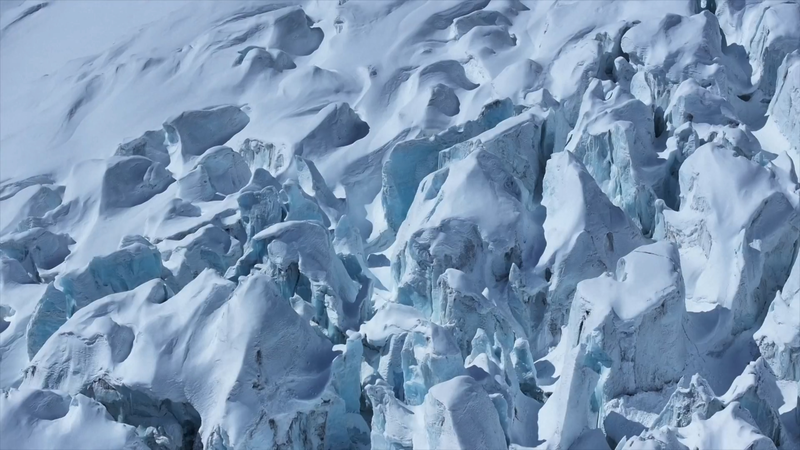After a day of wind and snow, skies cleared over the Renlongba Glacier in Qamdo City, in the southwestern part of the Chinese mainland's Xizang Autonomous Region. This week, China has kicked off its first "space-to-sea" glacier survey, using satellites and a low-altitude helicopter to probe marine glaciers from above and below.
Marine glaciers – also known as temperate or warm glaciers – sit in high mountain regions and flow across terrain. Their rapid freeze-and-melt cycles make them sensitive climate indicators. Over the next two weeks, researchers will cover roughly 1,000 square kilometers of glacier zones in southeastern Xizang, gathering data that should shed light on global climate change and water resources management.
Onboard the helicopter are high-frequency ice-penetrating radars mounted on either side of the fuselage. "These instruments reveal the internal layers of ice," says Xiong Shengqing, chief scientist at the Natural Resources Airborne Geophysical and Remote Sensing Center of China (AGRS). A homegrown airborne gravimeter – just one-third the size of comparable foreign models – measures subtle density variations to map glacier thickness with world-class precision.
Meanwhile, two Gaofen satellites scan and photograph the glacier from orbit. "By fusing high-precision satellite imagery with terrain data, we've built a 3D model of Renlongba Glacier," explains Wang Shanshan, senior engineer at AGRS. This digital twin helps scientists simulate glacier movement and forecast melting scenarios under different climate models.
This three-dimensional approach – spanning space, air and ground – marks a first for China's marine glacier observation. It overcomes challenges posed by high altitude, low temperatures and complex topography, delivering a comprehensive monitoring system that could inform water resource planning and climate adaptation strategies worldwide.
Full results of the mission are expected in three to four months, providing a data-driven foundation for researchers and policy makers tackling the realities of a warming planet.
Reference(s):
China's first space-to-sea glacier survey underway in Xizang
cgtn.com



